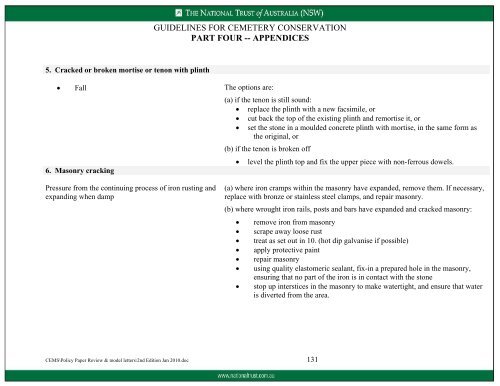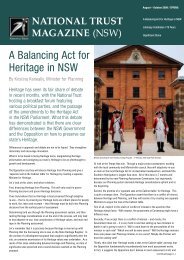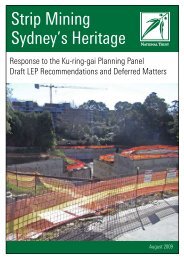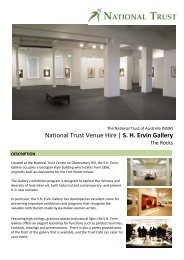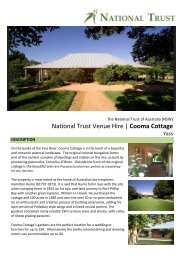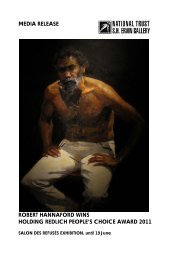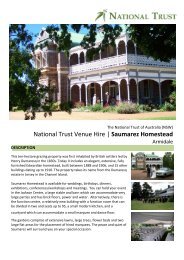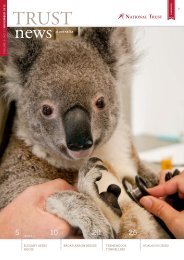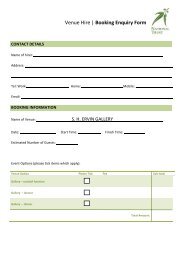Guidelines for Cemetery Conservation - National Trust of Australia
Guidelines for Cemetery Conservation - National Trust of Australia
Guidelines for Cemetery Conservation - National Trust of Australia
Create successful ePaper yourself
Turn your PDF publications into a flip-book with our unique Google optimized e-Paper software.
GUIDELINES FOR CEMETERY CONSERVATION<br />
PART FOUR -- APPENDICES<br />
5. Cracked or broken mortise or tenon with plinth<br />
• Fall The options are:<br />
(a) if the tenon is still sound:<br />
• replace the plinth with a new facsimile, or<br />
• cut back the top <strong>of</strong> the existing plinth and remortise it, or<br />
• set the stone in a moulded concrete plinth with mortise, in the same <strong>for</strong>m as<br />
the original, or<br />
(b) if the tenon is broken <strong>of</strong>f<br />
6. Masonry cracking<br />
• level the plinth top and fix the upper piece with non-ferrous dowels.<br />
Pressure from the continuing process <strong>of</strong> iron rusting and<br />
expanding when damp<br />
(a) where iron cramps within the masonry have expanded, remove them. If necessary,<br />
replace with bronze or stainless steel clamps, and repair masonry.<br />
(b) where wrought iron rails, posts and bars have expanded and cracked masonry:<br />
• remove iron from masonry<br />
• scrape away loose rust<br />
• treat as set out in 10. (hot dip galvanise if possible)<br />
• apply protective paint<br />
• repair masonry<br />
• using quality elastomeric sealant, fix-in a prepared hole in the masonry,<br />
ensuring that no part <strong>of</strong> the iron is in contact with the stone<br />
• stop up interstices in the masonry to make watertight, and ensure that water<br />
is diverted from the area.<br />
CEMS\Policy Paper Review & model letters\2nd Edition Jan 2010.doc 131


